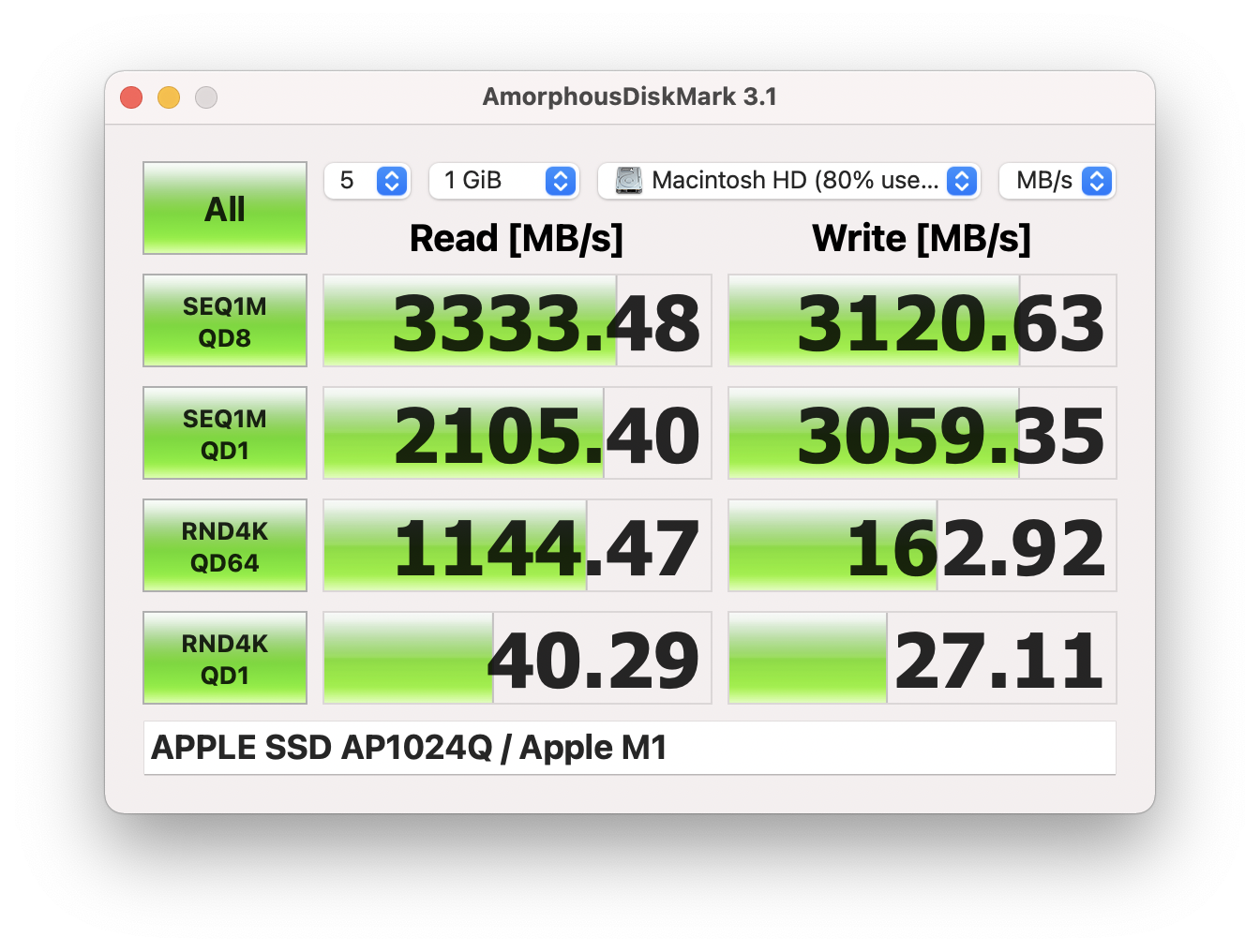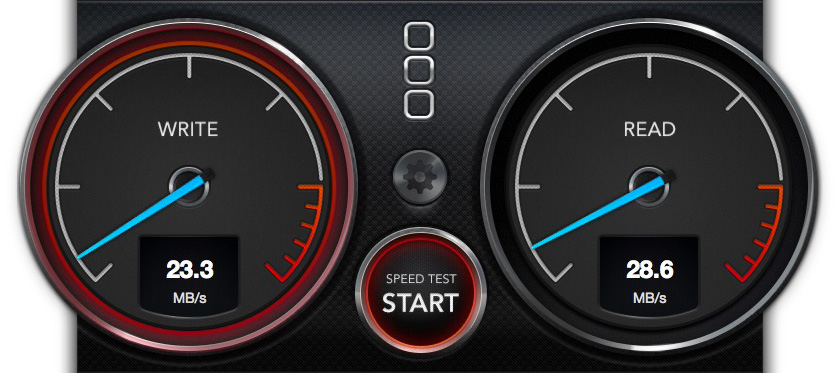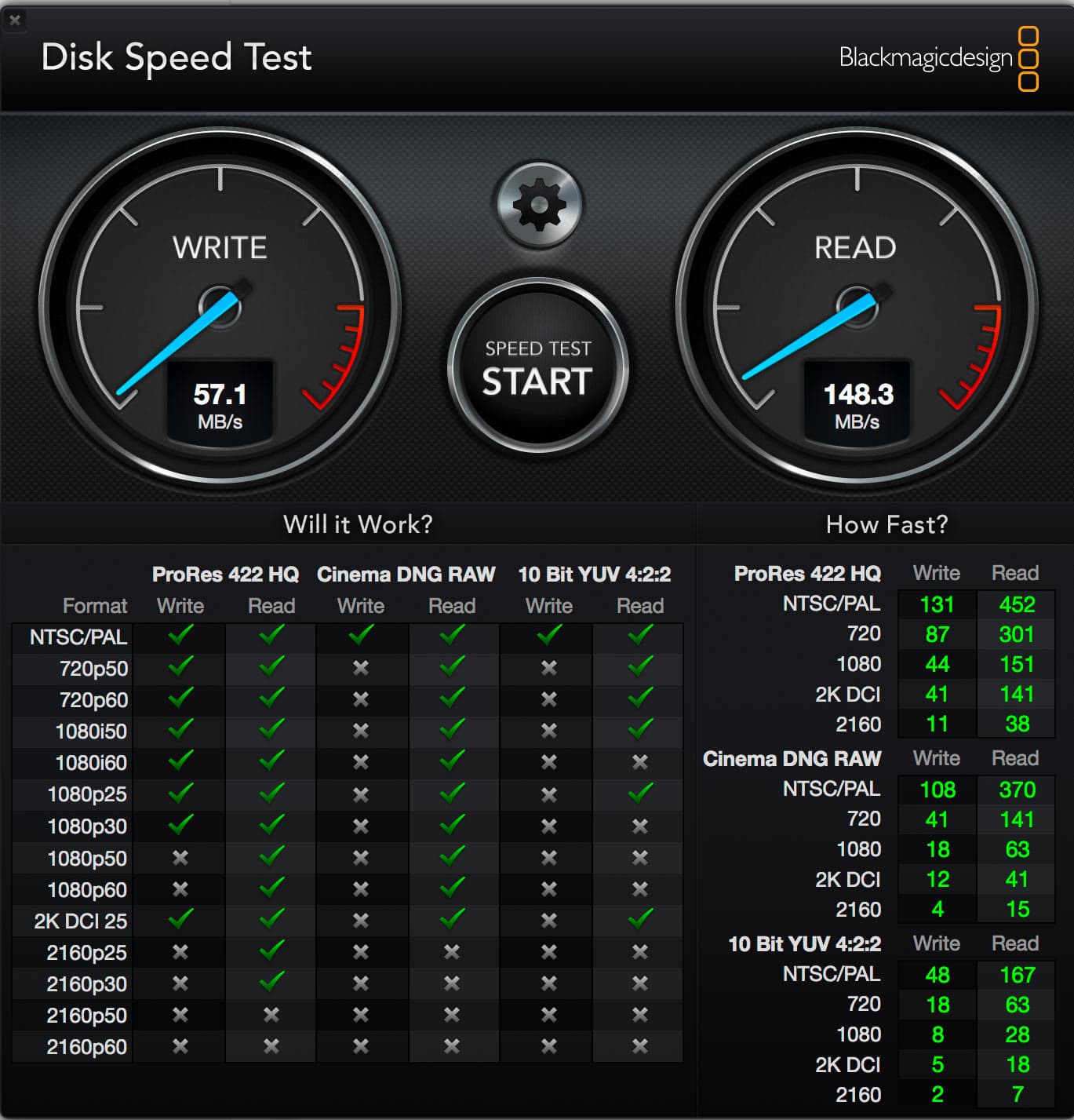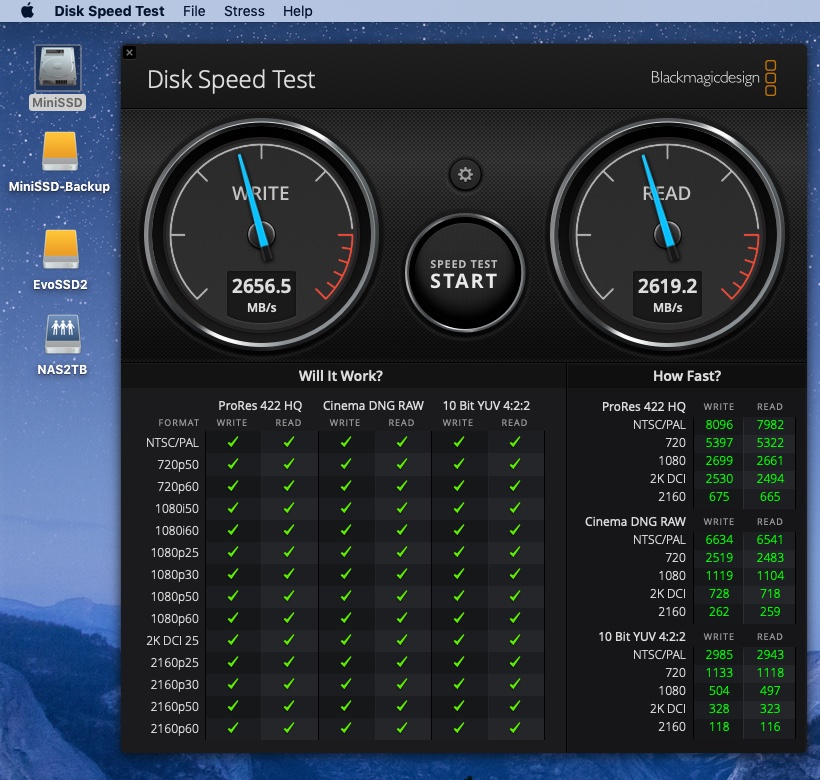
That means that these machines feature storage units that are potentially upgradable in the future. The only downside is that Blackmagic Disc Speed Test was designed for people working with large files.
#Mac disk speed test free#
This free utility was designed to test the speed of larger drives however, it will also work as a fake SD card test.
#Mac disk speed test pro#
It’s just another reason to consider the entry-level 13″ MacBook Pro over the 12″ MacBook.Īs a side note, it’s also worth pointing out that the 2016 MacBook Pro features a removable SSD powered by a custom Apple controller. If you’re a Mac owner and want to verify your SD cards, Blackmagic Disk Speed Test is for you.

Needless to say, the SSD in the new MacBook Pros are very fast. Random and sequential throughput (read/write operations) is calculted in MB/s and can be compared in consistent and reliable manner between mobile and desktop platfotms and devices.
#Mac disk speed test android#
Download Standard Edition Shizuku Edition System Requirements OS Windows XP/Vista/7/8/8.1/10/11Windows Server 2003/2008/2012/2016/2019/2022 Architecture x86/圆4/ARM64 Installer does not support Windows XP/2003 (NT5.x). Cross Platform Disk Test (CPDT) Measuring storage performance (SSD, HDD, USB Flash etc.) and RAM speed across Windows, macOS and Android devices. As you can see, the Late 2016 MacBook Pro eclipses this reading, causing the test to peg out at 2,000 MB/s or 2 GB/s. About CrystalDiskMark CrystalDiskMark is a simple disk benchmark software. Blackmagic Disk Speed Test benchmark on Late 2016 MacBook Proįor comparison, here is my Early 2016 MacBook (12″): Blackmagic Disk Speed Test benchmark on Early 2016 MacBook (12″)īlackmagic’s speed test appears to max at 2,000 MB/s for read speeds. But just to be sure, I decided to run a similar test using Blackmagic’s Disk Speed Test. A quick look at the QuickBench test shows that the hardware performs right in step (divide by 1,000) with these expectations.įor comparison, here is my Early 2016 MacBook (12″), which was released earlier this year: QuickBench 4.0 benchmark on Early 2016 MacBook (12″)Īs you can see, that’s a significant difference in both read and write speeds. Remember, Apple is claiming read speeds up to 3.1 GB/s for both the 13″ and 15″ MacBook Pro, and 2.1 GB/s write speed. QuickBench 4.0 benchmark on Late 2016 MacBook Pro Here is a benchmark taken from QuickBench showcasing both read and write speeds for the 256 GB PCIe SSD inside. The low-end 2016 MacBook Pro might not be as fast from a processing or graphics perspective, but when it comes to disk I/O, this thing flies. USB ports are usually on the side or front of laptops, and on the front or back of desktop computers. While that may be true, that doesn’t mean the 13″ low-end version of the new MacBook Pro is slow. Method 1Method 1 of 2:Using USBDeview for Windows Download Article. Disk Speed Test will continue to test writes and reads from your. The results show, as Apple has claimed, that the SSD inside this machine is crazy fast.Īs our own Ben Lovejoy noted in an earlier post, the Late 2016 15″ MacBook Pro appears to have the fastest SSD in a production laptop machine. Simply click the start button and Disk Speed Test will write test your disk using large blocks of data, and then display the result. UAC Dialog: YES -> w/ Administrator Rights, NO -> w/o Administrator Rights. If you would like to measure Network Drive, please run as w/o Administrator rights. If you execute CrystalDiskMark with Administrator rights, it does not show Network Drive. You can easily detect when a device is performing subpar and, and with the spinning disk, you can see is transfer speeds deteriorates over time.I’m still putting the (new) Late 2016 MacBook Pro (without the Touch Bar) through a variety of tests, but I just had to point out this SSD benchmark test that I ran using my favorite disk benchmarking utility, QuickBench. A part of SSDs depend on test data (random, 0fill). I have run Blackmagic on USB 2, thumb drives, USB 3, and USB C devices to see if I’m getting my money’s worth. On an older MacBook Pro the rates I see are 500 MB/S both read and write, as you would expect. I have tried this on my older mackbooks with SSD and they do scale down as the device is older. Disk speed test blackmagic mac 16:20 Disk speed test blackmagic mac 16:20. On my 2016 MacBook Pro, I am seeing speeds like 1,000+ MB/s write, and 1100+ MB/S read.

Since the “volume” is on your Startup Disk, you will see how fast it drive is.

In Blackmagic select the disk image mounted.

Mount the volume (if it is not already mounted). Make it big enough for Blackmagic to work with (7+ GB) and name it what you will. Create a disk image (.dmg) using the disk utility specifying file->new image->blank image. I found a workaround that will report the rates of the Startup Disk. When Blackmagic tries to read the Startup Disk, you get the message that the device is not writeable, hence you cannot rate the the transfer rates of the drive. Blackmagic has been updated to adequately report the speed of SSD devices.


 0 kommentar(er)
0 kommentar(er)
